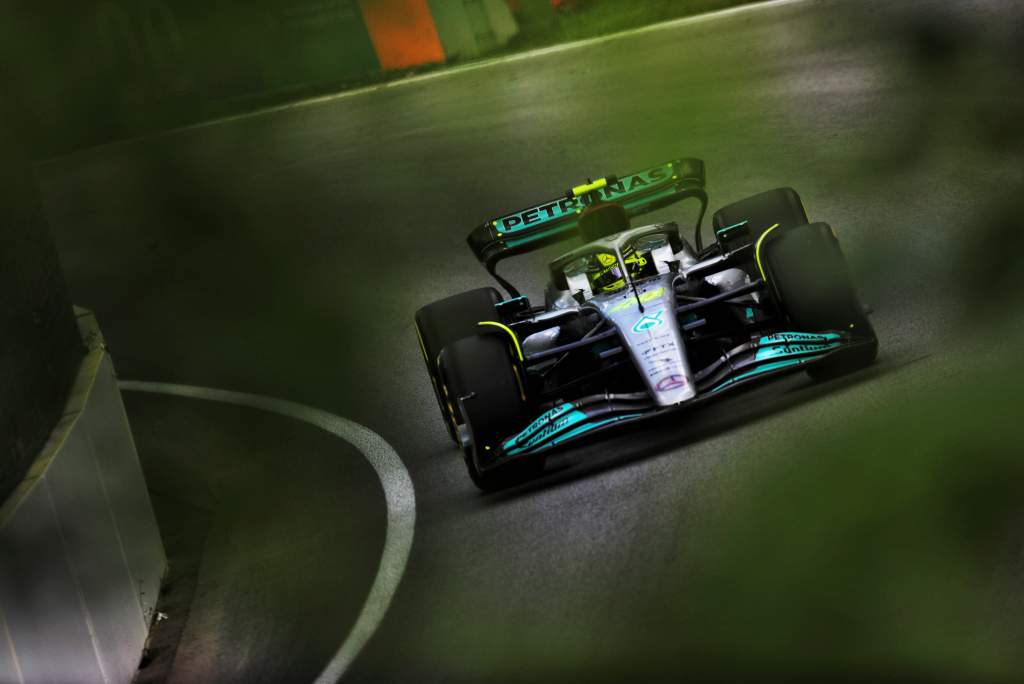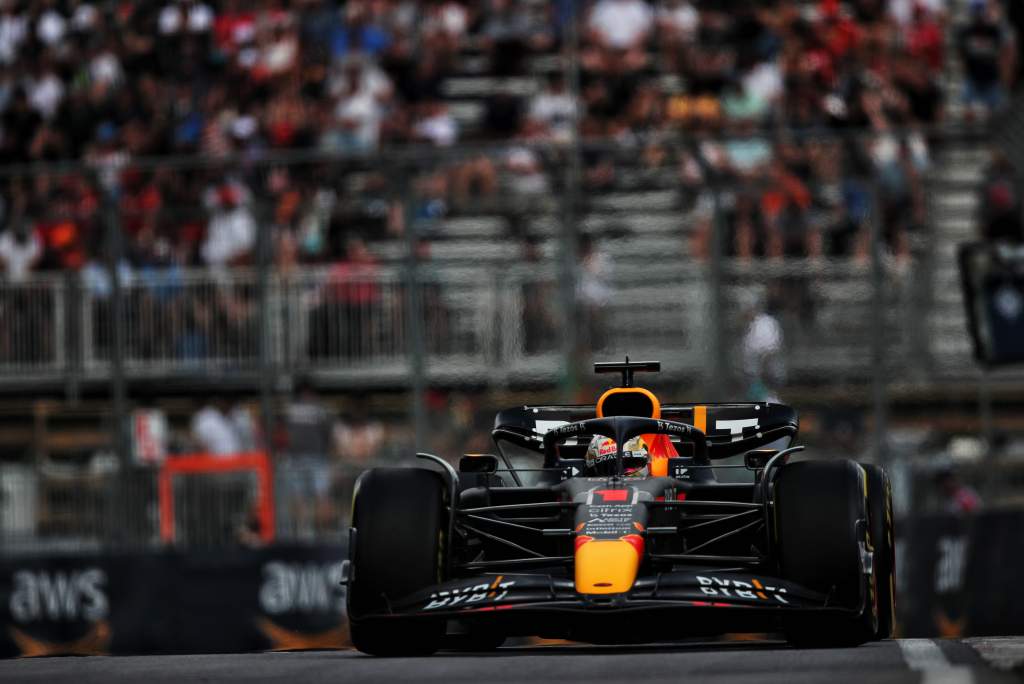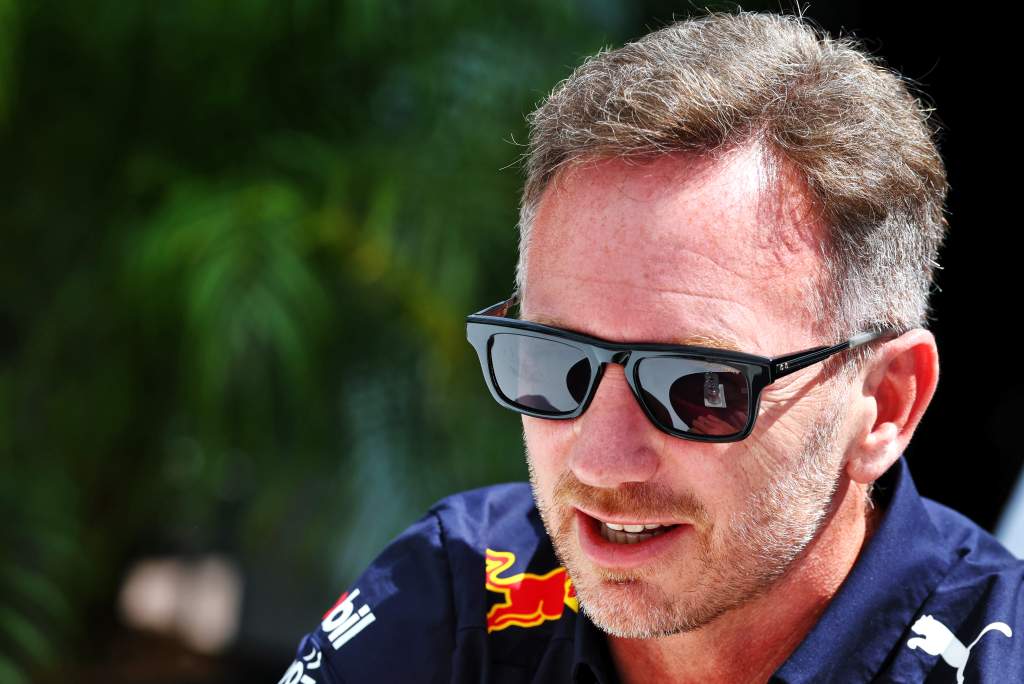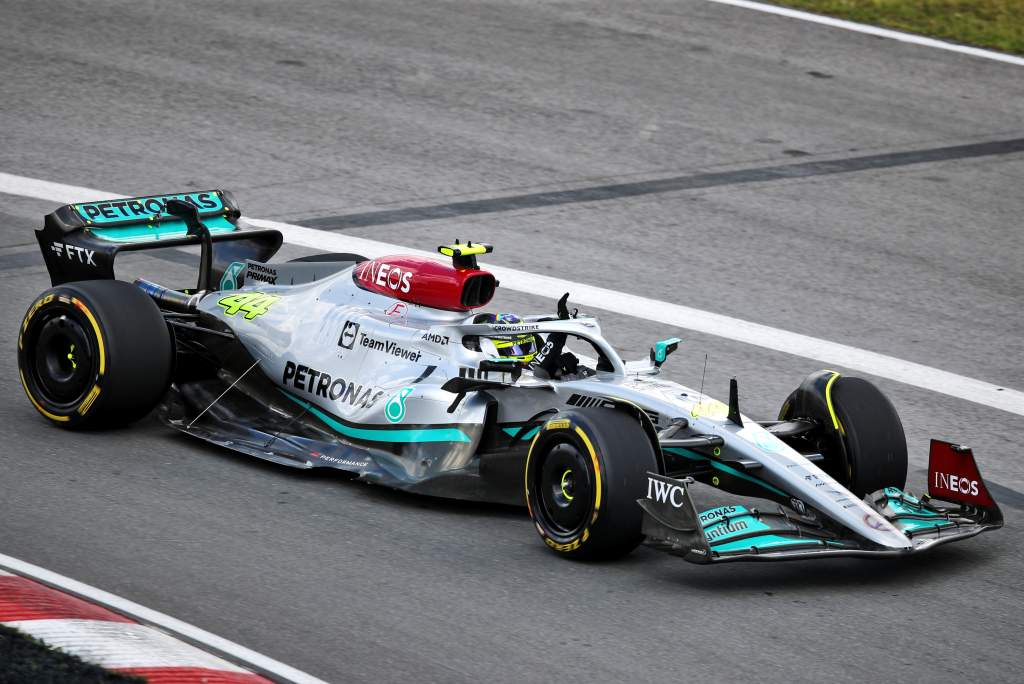Up Next

Mercedes chief technical officer James Allison has warned the FIA’s desire to apply a metric to limit the vertical oscillations drivers are subjected to could be “a problematic way forward”, despite backing moves to take action to curb violent bouncing and porpoising.
The FIA issued a technical directive and intended to introduce such a metric for the second day of running in Canada after discussions with teams and analysis of data on Friday. But it has now deferred this to allow more data to be gathered.
Allison welcomed the intent of the FIA action, but suggested it would require a high level of transparency for there to be confidence in such a regulation. He also raised concerns about the possibility of imposing set-up changes on teams.
“It’s welcome that the FIA are recognising that it’s not a happy situation where laptime and driver’s health are in very sharp conflict with each other,” Allison told Sky Sports F1.
“As a sport, it’s really helpful if that’s recognised and we try to tiptoe our way out of the corner that the sport’s wedged into at the moment. Certainly, we’re very keen on working very constructively with them, as will everyone else in the pitlane.

“I have to say that the general approach of saying ‘we’re going to come up with a metric and then if you don’t fall the right side of that metric we will impose upon you certain changes’, that’s a tricky way forwards.
“At a very minimum, if that were the way forward then the metric that is derived would need to be very transparently communicated, the data on which it’s based very transparently available and everyone’s metric live continuously and viewable by everyone.
“[That would] be a prerequisite, else we’re going to wind up in a really horrid situation where we’re told we must do something and we’re looking at another car that’s bouncing and we’re thinking ‘what about them’ [but are told] ‘oh no their metric’s fine’.
“That would have to be all very out in the open and, I think, a problematic way forward.
“But I think the general direction of travel of saying ‘this is a problem we need to fix it’ as a sport is extremely sensible. And generally speaking the sport does tend to fix its problems in fairly short order.”
Red Bull team principal Christian Horner has also expressed his concerns about the FIA’s intervention, but in broader terms.
He has re-iterated it would be “unfair” to make mid-season regulation changes and suggested the FIA can black-flag any cars they consider to be unsafe.

While Allison supports the FIA’s intervention despite concerns about some of the detail, Horner said issuing the technical directive without consultation was wrong.
“You can understand safety being their main concern, but to drop a technical directive like that just as we’re coming into a weekend, without any consultation, it just feels the wrong way to be going about things,” Horner told Sky Sports F1.
“There needs to be proper consultation with the experts. A solution can be found. It’s a very dangerous thing to be giving the FIA the right to set up your rear ride height and your set-up going into a race.
“What happens if the wind changes during the race? What happens if the porpoising gets worse for whatever reason, based on the baseline they give?
“So what’s the metric with, how could they measure it? To apply this regulation, that’s what needs to be discussed. The intent is all well and good but it’s not been introduced in the right way.”
Horner also suggested there could be easier ways to tackle the problem of vertical oscillations rather than forcing set-up changes.
He suggested the technical directive was a “complicated way to go about solving an issue” and that the onus should be on the teams themselves to run the cars in a safe condition for the drivers.

“There’s so many things they could do what would just be easier,” said Horner. “Stick a bigger plank on it, for example, that would get the cars off the ground.
“It seems a very complicated way to go about solving an issue. It’s not an issue which affects all of the teams.
“I think the [responsibility] should be on the teams to get it sorted. There’s a set of regulations that are consistent for everybody there.”
Mercedes continued to battle its bouncing problems during Friday practice in Montreal, with Lewis Hamilton claiming the car was “getting worse”.
Allison explained that Mercedes has still not fully understood how it has ended up with such persistent problems.
“I wish I could answer because if we had the answer we would have clearly already fixed it,” said Allison when asked what went wrong with the design of the Mercedes W13.
“If you knew what you had done wrong then you would have diagnosed the steps necessary to put it right and it would be right or nearly right already.

“We clearly didn’t see the porpoising problem coming, and I think that’s probably true to a greater or lesser extent up and down the pitlane. That’s a problem we’ve largely got on top of.
“But we’re still left with a car that doesn’t really have enough rear grip, is suffering from a little bit of an unpleasant ride characteristic as all of these cars are very stiffly sprung and very near the ground, and just is not a competitive overall package yet.
“But why we arrived like that, I guess that will become clearer to us and to everyone in the fullness of time.”






